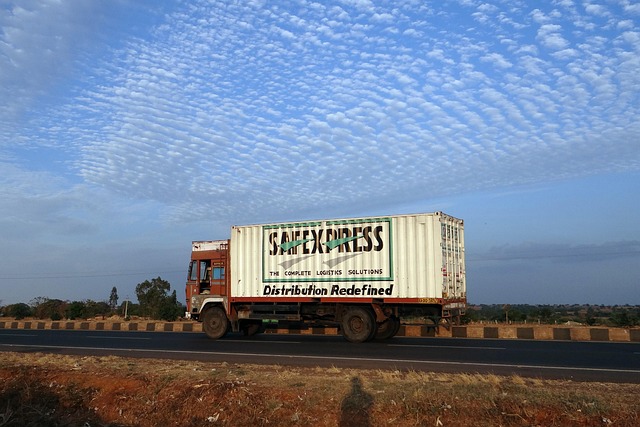Registering a car in California is a straightforward process, but understanding the steps is key. This guide will walk you through each phase, ensuring a smooth experience. From gathering essential documents to using the VIN verifier to check a vehicle’s history, we cover it all. Learn how to submit your application and pay fees, then receive your registration certificate and tags. By following these simple steps, you’ll be on the road in no time while adhering to California’s regulations.
- Understanding the California Vehicle Registration Process
- Preparing Your Documents for Registration
- Using the VIN Verifier to Check Vehicle History
- Submitting Your Application and Paying Fees
- Receiving Your Registration Certificate and Tags
Understanding the California Vehicle Registration Process

In California, registering a car involves several steps that can seem intricate, but with proper preparation and understanding, the process becomes more manageable. The first step is to ensure your vehicle meets all safety and emission standards set by the state. This includes passing a smog test (or an alternative emissions inspection) if your vehicle is over a certain age or type. Once your car has passed the necessary inspections, you can initiate the registration process through the California Department of Motor Vehicles (DMV).
A key component of this process is the Vehicle Identification Number (VIN) verification. This involves inputting your car’s unique VIN into the DMV system to confirm its authenticity and history. For convenience, many residents opt for a mobile VIN verification service, which allows them to complete this step without visiting a DMV office. This method streamlines the registration process, especially for those who need a quick and efficient solution, such as when acquiring a newly purchased vehicle or transferring ownership.
Preparing Your Documents for Registration

Before diving into the registration process, it’s crucial to gather and prepare all necessary documents. One essential tool in this preparation is a reliable Vehicle Identification Number (VIN) verifier. A mobile VIN verifier or mobile VIN inspection service can help ensure that your vehicle’s information matches the data in national databases. This includes checking for any outstanding recalls, previous accidents, or other issues that could impact registration.
By utilizing these advanced services, you simplify the verification process and minimize potential delays during registration. With a simple mobile VIN check, you gain peace of mind knowing that your car is safe and compliant with California’s requirements. This proactive step not only saves time but also guarantees a smoother registration experience overall.
Using the VIN Verifier to Check Vehicle History

Before proceeding with the registration process, it’s crucial to utilize the Vehicle Identification Number (VIN) Verifier tool provided by the California Department of Motor Vehicles (DMV). This powerful resource allows you to access a vehicle’s comprehensive history, including its previous owners, maintenance records, and any reported accidents or damage. By performing a simple VIN inspection, you can gain valuable insights into the car’s past, ensuring transparency and peace of mind throughout the registration process.
A mobile vin verifier is an excellent option for those seeking convenience. This service enables you to check vehicle history on-the-go, as opposed to visiting a DMV office or waiting in lines. The process involves inputting your VIN into a secure online platform or using a dedicated app, which then provides instant access to detailed information. This modern approach streamlines the initial steps of car registration, making it more efficient and accessible for California residents.
Submitting Your Application and Paying Fees

After completing your vehicle’s registration application, it’s time to submit it along with the required documents and fees to the California Department of Motor Vehicles (DMV). The process typically involves a few simple steps. First, double-check that all information is accurate and complete, including your personal details and vehicle specifications. Then, submit your application at a local DMV office or through their online portal, ensuring you meet all the necessary requirements.
Fees for car registration in California vary based on vehicle type and age. You’ll need to pay these fees using a credit card, debit card, or check. Some residents may be eligible for discounts or exemptions, so it’s worth checking with the DMV beforehand. Additionally, consider utilizing mobile vin verification services for a quick and convenient way to ensure your vehicle’s details are correct, as this can streamline the entire registration process, including the vin inspection.
Receiving Your Registration Certificate and Tags

After submitting your application and required documents at a California Department of Motor Vehicles (DMV) office or by mail, it’s time to receive your new registration certificate and license plates. The DMV will process your request and issue your vehicle’s registration, which you’ll need to keep in your vehicle at all times. Along with your registration, you’ll also be provided with a set of license plates that must be displayed on your car.
For added convenience, many individuals opt for a mobile VIN verifier or mobile vin verification service to streamline this process. Using a smartphone app, these services allow you to capture and transmit your vehicle’s unique VIN (Vehicle Identification Number) digitally for quick and accurate registration checks. A mobile vin inspection can save time by eliminating the need for physical interactions with the DMV, making it a popular choice among California car owners.
Registering a car in California is a straightforward process that requires proper preparation. By understanding the steps outlined in this article, from gathering essential documents to utilizing the VIN Verifier for vehicle history checks, you’re well-equipped to navigate the registration process smoothly. Remember to keep your registration certificate and tags secure, as they are crucial for legal driving in California.
